- Manage Orders

How to write a 4 paragraph essay.
"How to Write a 4-Paragraph Essay" underscores the importance of well-structured paragraphs and topic sentences in effective writing. Addressing the question, "What does a paragraph look like?" a paragraph is defined as a coherent series of sentences, all centered around a single topic. These organized units of writing play a crucial role in guiding the reader through the subdivisions of an essay, helping them discern the essay's organization and comprehend its key points. Paragraphs can encompass diverse information, such as examples, illustrations, descriptions of places, characters, processes, narration of events, comparisons, contrasts, classifications, or discussions on causes and effects.
Despite the variety of content paragraphs can contain, they all share common characteristics, with one of the most crucial being the presence of a topic sentence. This sentence acts as the anchor, encapsulating the main idea of the paragraph and providing readers with a clear understanding of the upcoming content. In essence, paragraphs serve as building blocks in crafting well-organized and coherent essays, ensuring a seamless flow of information for the reader.
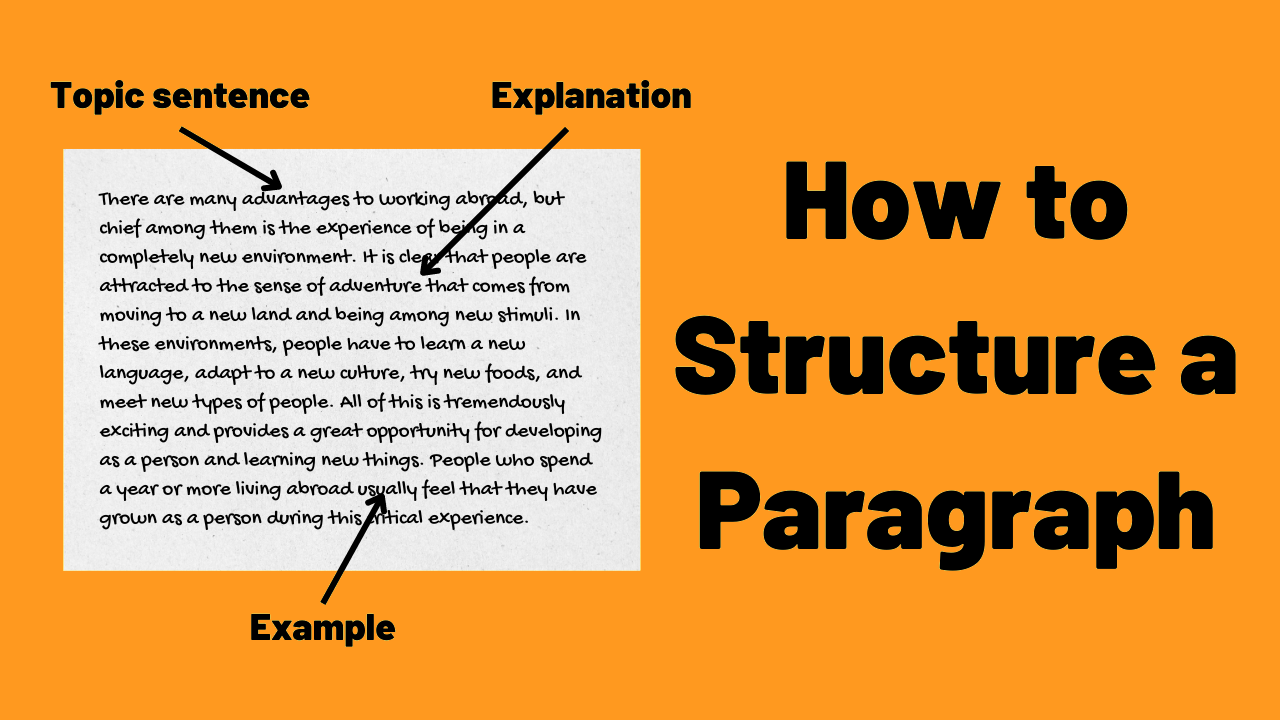
Essay Structure - A 4-Paragraph Sample
A 4 paragraph essay may take any form. It could be an argumentative essay, compare and contrast essays, review essays, and so much more. Most four paragraphed essays usually review essays. However, some may be just requiring you to give your point of view on a matter. Therefore, you need to learn how to write this kind of essay. This article will equip you with the basic skills you need to learn to write a great 4 paragraph essay. The most important thing you need to know is how to structure an essay.
The structure of a four paragraph essay is very important as it demonstrates well-thought ideas. In general, these essays take the same structure as any other essay. A well-structured essay has an introduction, a body, and a conclusion. The introduction gives information on the background of the topic and introduces the thesis of the essay. The introduction is followed by the body.
It should be noted that there should be a proper transition between the introduction and the body. The body of the essay contains well thought and explained ideas to support the thesis effectively. For a four-paragraph essay, the introduction should take up one paragraph. The body should be two paragraphs. Finally, the conclusion should tie all the points with the thesis, hence giving the reader a satisfactory answer to the initial question.
We do understand just how daunting a task is writing those four paragraph essays for undergraduate and postgraduate could be - the sleepless nights of trying to find the right words, the anxiety of not having enough words or not knowing what to cut down, the fear of "What if my essay is not good enough?" We can relate to all those feelings. The exciting thing is that the entire team at our custom writing service doesn't find essay writing daunting, and it would be our absolute delight to help you with your essays.
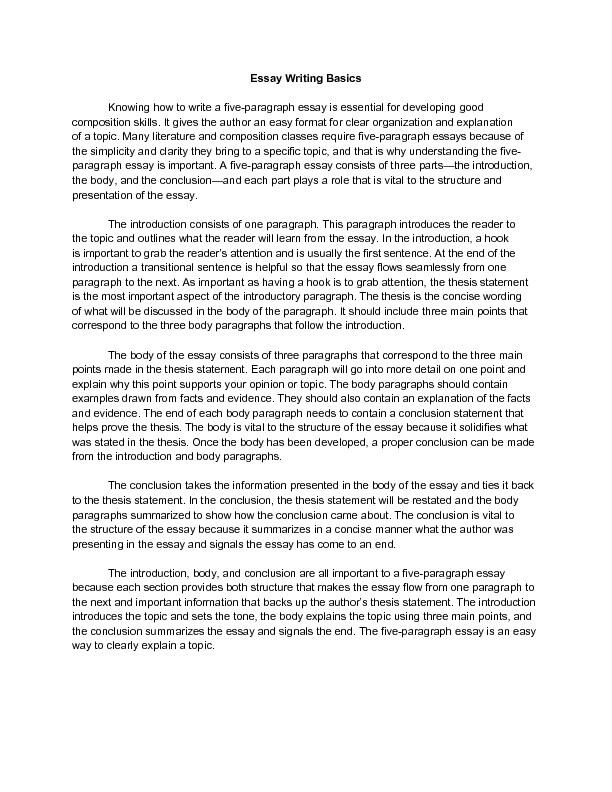
Components of a five-paragraph essay
A proper essay has three main components. They are the introduction, body, and conclusion.
The introduction of an essay is different from that of a research paper. For a research paper, the introduction contains background information on the subject you are to cover on the body. It also includes the thesis statement of the paper. For the case of an essay, the introduction does not give any background information; instead, it is supposed to be brief and captivating. The introduction of an essay should compel the reader to read on. When writing the introduction, do not state the obvious, for example, "this essay is about" or "the essay's topic is." Instead, begin with statements that will grab the attention of the reader, for example, a quote, dialogue, a story, or even an informative statement.
The body consists of your main argument. This is, however, dependent on the purpose of your essay. However, make sure that the transition from the introduction to the body is smooth. At his point, you aim to convince and explain to the reader about your topic. To do this, you will need to have a list of points you want to discuss. Therefore, the body should consist of these points with a detailed explanation. To form a solid argument, you should start with the strongest points, followed by the least strong. Major points should be in separate paragraphs. It is essential to ensure that you have relevant and correct examples to support your points. This will play well for you when persuading the reader.
The conclusion of an essay brings closure to the topic and summarizes the main ideas of the essay. Remind the reader of your thesis statement and show some comments to back it up. You could also suggest ways to solving a particular problem if your essay topic was based on such a topic.
How to write better essays
1. Come up with a topic and a title
The main thing is to come up with an effective topic and a title. Firstly, you must understand the functions of a title which include: prediction of content, catching the reader's attention, it reflects the tone as far as the writing is concerned, and finally, it does contain keywords that are easily searchable
A good title takes time to develop since if you fail to come up with a proper title, then everything will fall as you proceed to establish your essay and you will realize you're losing track in your writing.
2. Choose the principal idea, or thesis, of your essay.
A thesis for an essay is quite important and plays a vital role as well since it ensures that the reader has an idea regarding the essay and the discussions that as concerned with the essay. A thesis statement will bring forth the ideas of the essays direct to the reader, and that is why a thesis statement should be strong and to the point. It shouldn't be complicated and always remember that coming up with a well-stated thesis statement does ensure that the topic is effective and this grasps the attention of the reader. A thesis statement determines the destiny of your essay, and it does portray the effort put in by the writer in coming up with the topic and the resulting outline of the essay.
3. Outline your essay into introductory, body and summary paragraphs:
Introductory Paragraph
• Hook : Most people think that writing is something that only those with a born talent can ever do well.
• Thesis : Proper writing takes practice
• Links to the main ideas to be developed in the essay: Relentless practice and not giving up gives rise to the art of writing.
1st Body Paragraph
• Main idea: Practice leads to proper writing skills
• Support : Writing without prior practice and experience + example
• The Conclusion
2nd Body Paragraph
• Main idea: Prior writing experience has changed how writers bring forth their ideas in writing.
• Support : Prior writing experience enables writers to be more experienced and therefore becoming more creative and at the same time avoiding spelling mistakes and other grammatical errors
• Support : Writing what you have experienced makes it easy to come up with different topics, and as a writer, you are comfortable to write literary about anything that comes your way.
3rd Body Paragraph
• Main idea: Writing experience has changed how writers spend their time writing.
• Support : Writers with the least experience tend to take more time coming up with a specific material, and this might affect the rate at which they develop specific content material or a specific type of writing which they have been assigned.
• Support : Proper writing experience ensures that a writer can write more articles and without anything being compromised for example the quality and the degree of creativeness.
The Concluding Paragraph
• Review of main ideas of each paragraph
• Restatement of thesis: Proper writing takes practice
• Concluding thought: Writing will continue to demand practice and self-motivation.
How to improve writing skills in English for students
1. You need to start on a high note by using a question and most specifically a rhetoric one. This is within the introductory paragraph and the interesting sentence is defined as the hook which tends to capture the attention of the reader.
2. Next you have to come up with the thesis statement. This is everything when it comes to shaping the destiny of your essay.
3. Proceed to introduce the body paragraphs which you will link straight from the introduction. This ensures that the whole essay is connected
4. As you proceed with the body paragraphs, ensure that the main point is stated in the start of the body paragraphs. Ensure you have used examples as illustrations to support the main idea in each paragraph
5. Introduce the summary paragraph which only restates the central ideas of the body paragraphs
6. The last sentence generally restates the thesis of the essay which as discussed earlier on, builds the foundation of the entire essay.
7. The final statement: This can predict anything discussed and backed up in the essay body paragraphs with proper illustrations. At this stage, avoid introducing any new ideas.
How to write a good essay in English quickly in 6 steps
1. Go through the instructions
Before getting to the researching step, ensure to read the instructions first where they are provided. You could come up with the best essay but end up scoring a low grade or end up having your essay rejected as a result of not adhering to specified instructions. Ensure that you stick to the word limit, writing style, or any other guidelines which might be provided. Also, make sure that you submit your essay within the specified time to avoid penalties.
2. Research your topic
The next step is to understand your topic. The topic will either be provided, or you'll have the freedom to choose it yourself. If the topic is provided, this simplifies the option of searching for a topic. However, if it is not offered, the task of coming up with a topic that you can build on is upon you. This could work to your advantage. You could work on choosing a topic that you know is interesting to you. Regardless of the circumstances, it is crucial to conduct critical research on whichever topic you have at hand.
A visit to the library and the internet will usually provide all the information you need to write the essay. Ensure that you use credible sources in your research analysis. Take short notes to use later and arrange them properly to help make your work easier. This is important since you might not be able to remember everything you read from all your sources.
3. Prepare an outline for your essay
By taking a look at the notes you have made, you will find that you already have an idea of how your essay will be structured. You can use the points as a guiding factor to help you arrange your thoughts and make an outline of the essay. For example, at the top of a page, write your topic, and list down the main points. Leave a gap between each point. You can list the other minor points which are related to the main points in the gaps you previously left behind.
This is also a way for you to come up with a rough draft of your essay. The rough draft is the right way for you to find out whether your ideas fully work together; if you find that they do, you can move on to the next step.
4. Come up with a thesis statement
Having chosen your topic and using your outlined and drafted points, you can come up with your thesis statement. This helps the reader understand what the whole point of your essay is. Your main points are the indicators of your essay's theme. They will act as a guide to the reader to help them understand where you're going with your essay and why.
5. Write your essay
Now that you have everything you need, it is time to write your essay. Do not get hung up on details like finding the perfect vocabulary; instead, focus on writing your essay. Having written an outline and possibly a draft writing the essay should not be an issue.
6. Proofread and Edit
Once you're done with your essay, please go through it from the beginning and check that all the words flow together effortlessly. Check that the main objectives of your essay have been fulfilled and that your essay has answered the main issue that was being addressed. An important step is also to check that you have adhered to the rules that were provided at the beginning of your essay. If not, you'll have to correct them.
The next step is to edit any grammatical or typographical errors that might be present. Go through the essay several times to ensure that all available mistakes are corrected and that everything is where it should be.
Sometimes the best thing you can do for your writing is get started early. It may be difficult at first, but an early start can make a world of difference to that essay for class. If you need help, why not buy cheap essays on our service in an easy, fast, and secure way that will never sacrifice your privacy for convenience -it's never worth it.
How to structure 4 paragraph Academic book reviews.
While there are many reasons to write an academic 4 paragraph book review, getting a "publication" is not one of them. Academic 4 paragraph book reviews rank somewhere below publishing in a semi-obscure conference proceedings, and somewhere slightly above "vaguely laudatory service to the profession.”

- order book review
Writing a 4 paragraph book review: nine top tips and things to avoid
• Look at past 4 paragraph book reviews they've published about similar books. After you've read the book, look at reviews for the same book from other major sources. Think about who reads the publication and what they most want out of a 4 paragraph book review. Read a bunch of 4 paragraph book reviews, especially from the journal that's asking you. Then you can get a sense for what is typically included in reviews in general, and in ones that you find helpful. Do not to be overly-effusive with praise. You want to be critical.
• E.g., if it's mostly teaching faculty reading this journal/site, they will want a review to address: can this be used in the classroom? Could students read it?
• There's bound to be something about it you like, so talk about that. Use lots of adjectives. It doesn't have to be lengthy and doesn't spoil the plot.
• Again the point here is not “if you can’t say something nice, don’t say it.” The point is writing this kind of essay requires you engage with the arguments the author presents, and don’t just slam them. An academic 4 paragraph book review is not a yelp review.
• Be keen to avoid typos and errata
• Don’t write an academic review of a book that you can't find anything redeemable about.
A 4 paragraph book review is an essential evaluation of a written text or an object, and this covers all the aspects of books, literature material, among many other forms that can be intertwined at this level. Things you should know about a 4 paragraph book review include:
• A review provides the reader with a concise summary of the entire content. This contains descriptions that are based on the topic and also its general argument and perspective or even purpose.
• A review does offer an essential assessment of the written material. It points out what you, as the reader, you find to be worth noting, whether it is captivating, persuasive, and how it made you feel about the whole issue.
• A review overly suggests at the end of the material at hand can be appreciated by an audience.
How to write a 4 paragraph book review that is due in ...
1. First, read the book, and as you are reading, make a few notes about the points you want to get across, and these can be in the form of questions:
• What are the author’s purposes and views regarding this book? - This can clearly be stated in such a few words in the preface of the book or the introduction part.
• What form of evidence does the author use to fortify the points he or she has made? Ask yourself if the evidence is compelling- Do points fully get supported by what the author brings forward as hard evidence?
• How does the book correspond to other books with the same topic relate? - Does this book have some unique aspects? Does it add original and new information, and what group of readers will find this book to provide utility?
• Has the book been written by a professional writer? Does the author have the skills needed to write readable material?
• Which is an ideal level by which the book can criticize the book? Did the author manage to be successful in relaying his ideas across to the reader and achieve the main purpose of writing the book?
2. Try to imagine you are telling your friend a story regarding something which may be interesting or not. When you do this, then it becomes much easier since you do not have to follow so many rules, which indeed lead to confusion, and then you’re caught in between the writer’s block since you are afraid of doing the wrong thing. A 4 paragraph book review is simple, and you shouldn’t over think it. Just write as if you are telling your friend a book you read last night.
3. It is indeed imperative as you are telling your friend about the book you read that you do not forget to mention the name of the author. Remember, the story is not yours, and you should give credit where it’s due. It does not take much effort; just a second or two, and you have grasped that point as your professor is grading your paper.
4. Make specific points regarding what you are planning to write. This makes it a lot easier, and I do it all the time. Make seven points (an example), then per every point, write a paragraph. It’s clear to see that this is the simplest method since you only need to write like 100 words per every point, and you are good to go. That’s an entire paper you’ve just written. Just make sure you list the points before you get to start writing your 4 paragraph book review.
5. Before beginning to write your 4 paragraph book review, make sure you have made clear what your theme is since it’s quite disappointing if the reader of your 4 paragraph book review reads the entire text, and he or she doesn’t support what you have just reviewed. Make it clear at the beginning what you will be discussing about, and this makes it easier for everyone who is trying to read your 4 paragraph book review.
6. You also have to grade the book as per its genre. Does it have one in the first place? Like, does it fall under drama, action & adventure, horror, satire, or even mystery? If it does, then state its genre. You have some points there from your professor!
7. Think about the writing style the author has used. Does it appeal to your sense of humor? What do you like most about the narrative writing used, the descriptive or expository style used by the author. Comment on this the best way to like.
8. Use quotes from the book itself. I mean, quotes from the author. This will give the reader some sense of authority that you indeed have read the book, and even if you are not agreeing or you agree with the author, it’s right to pass authorization to the author. Use parenthesis (and include page numbers), avoid self-citations; do not make your views on the topic since this is not your written work.
On the issue of self-citation:
• It would be reasonable to avoid repeating what is essential in the author’s work, but you would rather try a dialogue with other authors!
• At the early stage of 4 paragraph book reviewing, we tend to self-cite to boost overall citations. Avoid this pitfall. You will feel embarrassed at a later stage of career to see your papers filled with self-citations.
9. I have stated this on point number 8, but I want to give you more details regarding the fact that you should not tell readers of your review what the book is about. Those are your views regarding the book, and they are STRICTLY not allowed since it’s not a written invitation to present your opinions regarding the book or the author. Your review should tell the readers if they should read the book, what is good about the book, or why they should not waste time reading the book altogether.
10. Spend some time and do some light research regarding the author of the book. This information is vital since you will understand more why the author came up with such a book. A book comes from a writer’s mind, and it’s entirely appropriate that when you write a book, it will rotate around your life, your friends, early school life, etc. so a book is just an invitation to the mind of the author, and you have to explore effectively to come up with a well-written 4 paragraph book review.
Just a recap:
• Read the book and makes notes
• Write a 4 paragraph book review just like you’d imagine telling your friend a story
• State the author's name
• Plan your writing by making points
• State the theme of the 4 paragraph book review to readers during the early stages
• State the genre of the book
• State your opinion regarding the writing style used
• Quote the author in your text
• Do not write your ideas for the book.
• Please do a deep dive and research EVERYTHING.
How to develop a 4 paragraph Book Report.
Instructors do like to assign 4 paragraph book report assignments, whether oral or in written format to 4th graders, and have you ever wondered why? Yes, you could think it’s an intentional way of forcing students to go deep into their books and read a large volume of books in the library. For sure, it’s even more than that if I can tell you the truth. Your instructor intends to broaden your understanding of today’s world and society, and that is precisely what good books do, they enlighten you to think and act the way the current trends in society expect you to behave regarding certain things. Books help in eye-opening and also in critical thinking. They aid in decision making, crucial eye-opening occurrences regarding experiences, and dealing with people too. This proves that a book is a tool that fully demonstrated that you have experienced reading books.
What does a 4 paragraph book report include? - Depending on your grade level, 4 paragraph book report content may vary. A middle-grade 4 paragraph book report does provide the minimal or let’s say basic details as far as a book is concerned; for example, a plot summary, several comments regarding the scholar’s opinion, and general impressions. With 4 paragraph book reports that concern students on a higher educational level, you expect them to be a little more detailed and even to deal with themes and other complicated things that regard 4 paragraph book reports.

- buy college essay
Useful tips to help you write an outstanding 4 paragraph book report.
Before going too far with the body of your 4 paragraph book report, spend a few minutes to have all the following questions asked and answered at a personal level.
1) Did you find the book to be enjoyable? - You can opt to answer this question, for example:
“The book was great; I learned so much about people as well as different cultures. What an amazing author and man.”
“I really love this book, and it’s quite a rare combination, an account of a daughter’s commitment to her dying father. The book was pleasurable to read, and Mike Smith writes gorgeously.”
“I liked the book but not very much; it’s just a book of a wonderful man, father, and grandfather. It’s also a book about diverse cultures. The author doesn’t have acute observations, and sympathy isn’t all that put together to bring the real picture of sad moments. It wasn’t achieved so well I’d say”
2) Was it well written?
You can answer this question like this:
“The book is an account showing to what depths human beings can go to achieve something meaningful or worthy. The book is simply a well-written account depicting the struggle that human beings can reach. The book doesn’t, however, add anything significant to our knowledge-based regarding the first settlers of Poland.”
“It’s a well-written book, and it drew me from the very beginning. It made me feel like I was standing right there with them as they seek the treasures of the land. There are a lot of good books, and this is one of them actually. I truly enjoyed every part of it. Its rather crazy and fanciful story, though, but at its core, it unveils all aspects of today’s world and how human beings are, typically. It’s a powerful book.”
3) What was the book’s genre?
Was the book a satire or an anthology which is among the most interesting genres, was it on this list? Philosophy, Biography, Business, Chick Lit, Children's, Christianity, Classics, Comics, Contemporary, Cookbooks, Crime, E-books, Fantasy, Fiction, Gay and Lesbian, Graphic Novels, Ancient Fiction, History, Horror, and finally thought the list could never be exhausted; Humor and Comedy.
4) Who were the main characters?
In fiction, which characters did play the most vital roles that intertwine well with the book's overall theme?
William Brown (The Travelling Horn Player)
William is a rebel child in Suburbia. His overall instincts are against what is termed as social-climbing and the humdrum. He has a way of befriending the outcasts.
Flashman (The Discworld Series)
Harry is funny, more honest, and ideally less harmful than the many brave fools whose paths he double-crosses. He is just an admirable rogue
5) Did you notice ant reoccurring symbols?
In the book “The Old Man and The Sea,” lions are depicted to symbolize the youth, freedom, and immeasurable strength.
The novella starts with the dream of Santiago, who dreamt about the lion on the beach.
The lion does represent a hunter who is very wild, noble, and quite manly in nature and the lord and king of that specific area he is living in.
The lions also serve as a symbol of Santiago’s childhood as he reminisces seeing them on the beachside in Africa as he was sailing there as a youth man.
6) Is the book part of a series?
Is the book part of a more significant collection of books? For example, Harry potter, hunger games, lord of the rings, a song of ice and fire, among other interesting book series ever produced.
7) For non-fiction books, can you identify the writer’s thesis?
It’s essential to identify the thesis when it comes to non-fiction books. Typically you can simply identify this by being keen when a stance is developed that related to the topic of the book.
8) What writing style is used in the book?
Does the author use expository writing, narrative writing, persuasive, or descriptive writing? Have you seen instances where the author has used more than one style of writing?
9) Can a tone be noticeable in the book?
Has the author conveyed a tone in the book? For example, a tone can be introduced in a story using an adjective, which brings forth a feeling of fear, anxiety, excitement, worry. Foolish, smart or depressing moments
10) Did you happen to come across intentional biases or slant?
You can easily detect bias and prejudice:
• Did the author use inflammatory text, for example, racial descriptions and slurs?
• Did the author make claims to demean?
• Did the author provide evidence which openly is meant to support one side while ignoring information that may demean what the author is trying to support?
11) Conclusion of a 4th grade 4 paragraph book report.
There is not going to be a change in the conclusion that the few pages synopsis did not tell us. Read the book and then summarize it.
As you are concluding, consider to add the following impressions and opinions:
• Was the ending quite satisfactory for fiction stories?
• Did the evidence actively support the thesis? (Still in non-fiction)
• What facts can be noted as being interesting as far as the author is concerned?
• Finally, would you ever recommend this book to anyone?
Make sure that your conclusion covers an additional paragraph with these additional points. You can re-state the name of the author in this section as well (this entirely depends with your rubric)
Sample 4 paragraph book report 4 th grade
“This book I read was fascinating. Full of so many things. It had all of the makings of a great book. The story...really interesting. All of the characters had their own role to play. The conclusion was one of the best I've ever read." - DT 4 paragraph book report, c. 4th grade.
• Did you find the book to be enjoyable?
• Was it well written?
• Did you notice ant reoccurring symbols?
• Who were the main characters?
• Did you happen to come across intentional biases or slant?
• Is the book part of a series?
• For non-fiction books, can you identify the writer’s thesis?
• What writing style is used in the book?
• Can a tone be noticeable in the book?
• What was the book’s genre?
• Conclusion
Straightforward Strategy
Who You Work With Matters. We are naturally straightforward and honest with a seemingly solid strategy. Work with the best and most reliable scholars of our team.
Unmatched Support
Are your expectations high? .. Absolutely no stone unturned - nothing left untouched, no detail left behind. Our patience, sensitivity, optimism, availability, support, care is unmatched.
Research Based Academic Approach
Working on reports or academic writing? Need help? Work with a professional writer, detailed, personal writing support. We strive for high quality research focused on lifelong learning.
- How to Cite
- Language & Lit
- Rhyme & Rhythm
- The Rewrite
- Search Glass
1. The Introduction
2. a strong thesis statement, 3. topic sentence, 4. structuring the body paragraphs, 5. the conclusion, how to write a 4-paragraph essay.
Used at all levels of education, the four paragraph essay offers a basic format that enables writers to present information in a concise manner. A four paragraph essay is an acceptable format for many types of essays, including cause and effect and compare and contrast essays. The four-paragraph essay consists of an introduction, two body paragraphs and a conclusion. Each paragraph in the essay requires specific information in order for readers to follow a logical flow of information.
The four-paragraph essay consists of an introduction, two body paragraphs and a conclusion.
Begin this paragraph with a “hook” that will make readers interested in your essay.
The University of Maryland University College recommends using:
- a surprising statement or statistic,
- personal story
- or rhetorical question.
Avoid the overused and unoriginal dictionary definition opening. After the opener, provide background information on the topic, which should tell readers the purpose of the essay, as well as what they should expect to read.
A thesis statement provides readers with a condensed version of the analysis or argument that you will discuss in the essay. These are typically one or two sentences, and are located at the end of the introduction paragraph.
A strong thesis statement avoids vague language and is specific and argumentative.
- The topic sentence announces the main focus of the paragraph by stating one of the arguments identified in the thesis statement.
- Provide supporting sentences that offer evidence for your claim.
- End the paragraph with your own observation or analysis.
Your body paragraphs should consist of a clear topic sentence, quotes, and explanations of the supporting evidence you have found. This is where you have the chance to prove your thesis to your reader. In order to do this, you must have strong evidence that supports the claim you are trying to make.
- Rephrase your thesis statement in the concluding paragraph, stating how it has been proven throughout the body paragraphs.
- The conclusion should have a summary of the essay’s main arguments and an explanation on how they are connected.
- Lastly, explain why the topic of your essay is important and why it should matter to the readers.
- University of Maryland University College: Introductions; 2010
- Indiana University: Thesis Statement; Jan. 2008
- University of Maryland University College: Conclusion
i am a writer
4 paragraph essay template
All formats, resource types, all resource types.
- Rating Count
- Price (Ascending)
- Price (Descending)
- Most Recent

Four Paragraph Essay Template

- Google Docs™

EASY 4 - Paragraph Compare/Contrast Essay Template !

- Word Document File
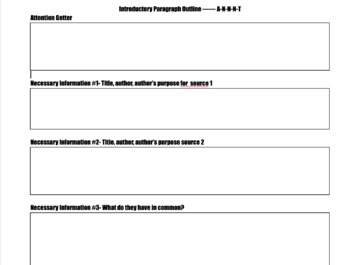
Informational Writing: 5 Informative Essays w/Guided Writing Templates 6-8

Writing Folder: Paragraphs , Essays , Stories, Reports & Poems

Opinion Writing Template - Scaffolded Essay , Paragraph Frames

Women's History Month Project - Report Template - Research, Essay , Map, Timeline

5 Paragraph Essay Graphic Organizers: 4 Organizers, Grading Rubric & Hints Sheet

4 Square Writing Template

Informational Writing 4 and 5 Paragraph Essay and Thesis Statement Workshops

Autobiography Project Template 5 Paragraph Essay Graphic Organizer
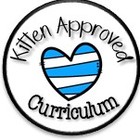
Introduction Paragraph Templates - Differentiated Skeletons for Research Essays

- Google Apps™
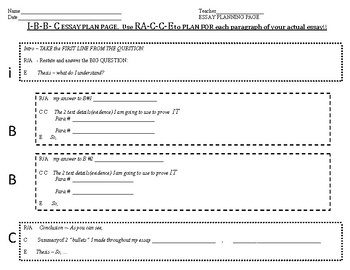
ESSAY WRITING TEMPLATE Paragraph Frames Everything you need!

Informational Writing 4 paragraph Essay

Yelp Informational Opinion Writing Project for Grades 4 , 5, 6 | Digital Google

Great Gatsby Color Guided Essay - Fill in the Blank & Reflection Style Essay

- Google Slides™
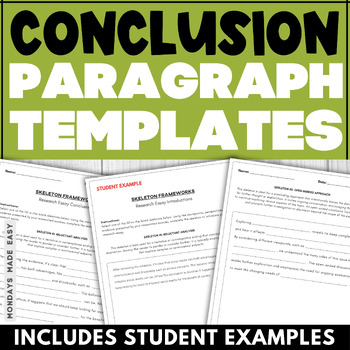

Conclusion Paragraph Templates - Differentiated Skeletons for Research Essays
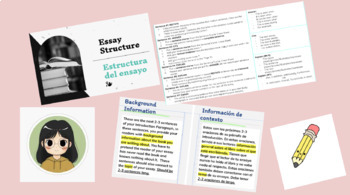
Essay Structure Unit (ENGLISH & SPANISH)

- Google Drive™ folder
![4 paragraph essay template Preview of PERSONAL NARRATIVE WINTER WRITING [Grades 4-6]](https://ecdn.teacherspayteachers.com/thumbitem/PERSONAL-NARRATIVE-WINTER-WRITING-Grades-4-6--10422954-1698737544/original-10422954-1.jpg)
PERSONAL NARRATIVE WINTER WRITING [Grades 4 -6]

Informational Writing 4 and 5 Paragraph Essay Workshops
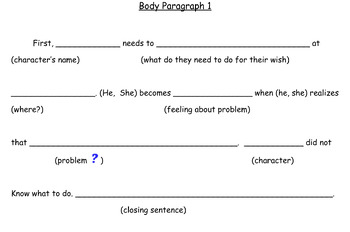
Narrative Writing Outline ESL, Simple, Easy, Fill in the Blank

October Writing Templates FREE

March Writing Templates FREE

Writing Graphic Organizers and Writing Templates

- We're hiring
- Help & FAQ
- Privacy policy
- Student privacy
- Terms of service
- Tell us what you think
Have a language expert improve your writing
Run a free plagiarism check in 10 minutes, generate accurate citations for free.
- Knowledge Base
- How to write an expository essay
How to Write an Expository Essay | Structure, Tips & Examples
Published on July 14, 2020 by Jack Caulfield . Revised on July 23, 2023.
“Expository” means “intended to explain or describe something.” An expository essay provides a clear, focused explanation of a particular topic, process, or set of ideas. It doesn’t set out to prove a point, just to give a balanced view of its subject matter.
Expository essays are usually short assignments intended to test your composition skills or your understanding of a subject. They tend to involve less research and original arguments than argumentative essays .
Instantly correct all language mistakes in your text
Upload your document to correct all your mistakes in minutes

Table of contents
When should you write an expository essay, how to approach an expository essay, introducing your essay, writing the body paragraphs, concluding your essay, other interesting articles, frequently asked questions about expository essays.
In school and university, you might have to write expository essays as in-class exercises, exam questions, or coursework assignments.
Sometimes it won’t be directly stated that the assignment is an expository essay, but there are certain keywords that imply expository writing is required. Consider the prompts below.
The word “explain” here is the clue: An essay responding to this prompt should provide an explanation of this historical process—not necessarily an original argument about it.
Sometimes you’ll be asked to define a particular term or concept. This means more than just copying down the dictionary definition; you’ll be expected to explore different ideas surrounding the term, as this prompt emphasizes.
Prevent plagiarism. Run a free check.
An expository essay should take an objective approach: It isn’t about your personal opinions or experiences. Instead, your goal is to provide an informative and balanced explanation of your topic. Avoid using the first or second person (“I” or “you”).
The structure of your expository essay will vary according to the scope of your assignment and the demands of your topic. It’s worthwhile to plan out your structure before you start, using an essay outline .
A common structure for a short expository essay consists of five paragraphs: An introduction, three body paragraphs, and a conclusion.
Like all essays, an expository essay begins with an introduction . This serves to hook the reader’s interest, briefly introduce your topic, and provide a thesis statement summarizing what you’re going to say about it.
Hover over different parts of the example below to see how a typical introduction works.
In many ways, the invention of the printing press marked the end of the Middle Ages. The medieval period in Europe is often remembered as a time of intellectual and political stagnation. Prior to the Renaissance, the average person had very limited access to books and was unlikely to be literate. The invention of the printing press in the 15th century allowed for much less restricted circulation of information in Europe, paving the way for the Reformation.
The body of your essay is where you cover your topic in depth. It often consists of three paragraphs, but may be more for a longer essay. This is where you present the details of the process, idea or topic you’re explaining.
It’s important to make sure each paragraph covers its own clearly defined topic, introduced with a topic sentence . Different topics (all related to the overall subject matter of the essay) should be presented in a logical order, with clear transitions between paragraphs.
Hover over different parts of the example paragraph below to see how a body paragraph is constructed.
The invention of the printing press in 1440 changed this situation dramatically. Johannes Gutenberg, who had worked as a goldsmith, used his knowledge of metals in the design of the press. He made his type from an alloy of lead, tin, and antimony, whose durability allowed for the reliable production of high-quality books. This new technology allowed texts to be reproduced and disseminated on a much larger scale than was previously possible. The Gutenberg Bible appeared in the 1450s, and a large number of printing presses sprang up across the continent in the following decades. Gutenberg’s invention rapidly transformed cultural production in Europe; among other things, it would lead to the Protestant Reformation.
Here's why students love Scribbr's proofreading services
Discover proofreading & editing
The conclusion of an expository essay serves to summarize the topic under discussion. It should not present any new information or evidence, but should instead focus on reinforcing the points made so far. Essentially, your conclusion is there to round off the essay in an engaging way.
Hover over different parts of the example below to see how a conclusion works.
The invention of the printing press was important not only in terms of its immediate cultural and economic effects, but also in terms of its major impact on politics and religion across Europe. In the century following the invention of the printing press, the relatively stationary intellectual atmosphere of the Middle Ages gave way to the social upheavals of the Reformation and the Renaissance. A single technological innovation had contributed to the total reshaping of the continent.
If you want to know more about AI tools , college essays , or fallacies make sure to check out some of our other articles with explanations and examples or go directly to our tools!
- Ad hominem fallacy
- Post hoc fallacy
- Appeal to authority fallacy
- False cause fallacy
- Sunk cost fallacy
College essays
- Choosing Essay Topic
- Write a College Essay
- Write a Diversity Essay
- College Essay Format & Structure
- Comparing and Contrasting in an Essay
(AI) Tools
- Grammar Checker
- Paraphrasing Tool
- Text Summarizer
- AI Detector
- Plagiarism Checker
- Citation Generator
An expository essay is a broad form that varies in length according to the scope of the assignment.
Expository essays are often assigned as a writing exercise or as part of an exam, in which case a five-paragraph essay of around 800 words may be appropriate.
You’ll usually be given guidelines regarding length; if you’re not sure, ask.
An expository essay is a common assignment in high-school and university composition classes. It might be assigned as coursework, in class, or as part of an exam.
Sometimes you might not be told explicitly to write an expository essay. Look out for prompts containing keywords like “explain” and “define.” An expository essay is usually the right response to these prompts.
An argumentative essay tends to be a longer essay involving independent research, and aims to make an original argument about a topic. Its thesis statement makes a contentious claim that must be supported in an objective, evidence-based way.
An expository essay also aims to be objective, but it doesn’t have to make an original argument. Rather, it aims to explain something (e.g., a process or idea) in a clear, concise way. Expository essays are often shorter assignments and rely less on research.
Cite this Scribbr article
If you want to cite this source, you can copy and paste the citation or click the “Cite this Scribbr article” button to automatically add the citation to our free Citation Generator.
Caulfield, J. (2023, July 23). How to Write an Expository Essay | Structure, Tips & Examples. Scribbr. Retrieved March 25, 2024, from https://www.scribbr.com/academic-essay/expository-essay/
Is this article helpful?

Jack Caulfield
Other students also liked, academic paragraph structure | step-by-step guide & examples, how to write topic sentences | 4 steps, examples & purpose, how to write an argumentative essay | examples & tips, unlimited academic ai-proofreading.
✔ Document error-free in 5minutes ✔ Unlimited document corrections ✔ Specialized in correcting academic texts

Free Worksheets and More Since 2001
- Graphic Organizers
4 Paragraph Essay Graphic Organizer
by Admin · 10 October, 2011
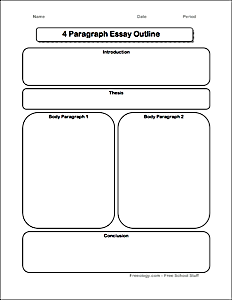
Tags: Brainstorming Paragraphs
- Next post 3 Paragraph Essay Graphic Organizer
- Previous post 5 Paragraph Essay Graphic Organizer
- 0 Trackbacks & Pingbacks
es super bueno
- Privacy Policy
- Awards and Certificates
- Back to School
- Classroom Signs
- Coloring Pages
- Environment
- Fun and Games
- Journal Topics
- Teacher Forms
- Telling Time
- Worksheet Creator
Coffee Fund

Thank you so much for your contribution and the educational info.

10 Free Graphic Organizer Templates for Any Subject
Different lessons require different types of content to help students learn. Here are 10 free graphic organizer templates to use for any subject.
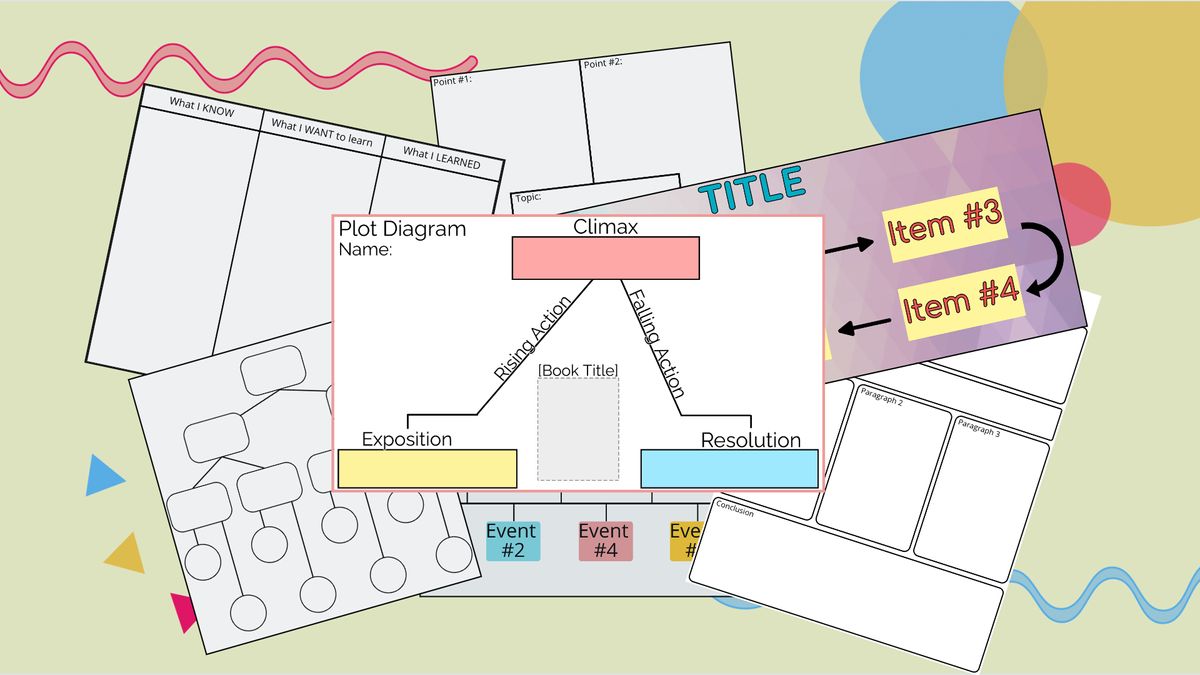
Most students are returning to the classroom in Fall 2021, but everyone’s learning methods have had to change over the past two years. It’s important to adapt as an educator with new techniques , digital materials, and fresh content to keep students engaged .
For any subject, graphic organizers provide effective ways to introduce, teach, develop, and test new material. But different lessons require different types of content to help students learn best. I’m going to give you 10 free graphic organizer templates to use for any subject – just use the Make It button to customize, label, and download your graphic organizer.
- Venn Diagram
- Plot Pyramid
- Brainstorm Chart
- Concept Map
- 5-Paragraph Essay Outline
- 4 Square Writing Chart
1. Flowchart
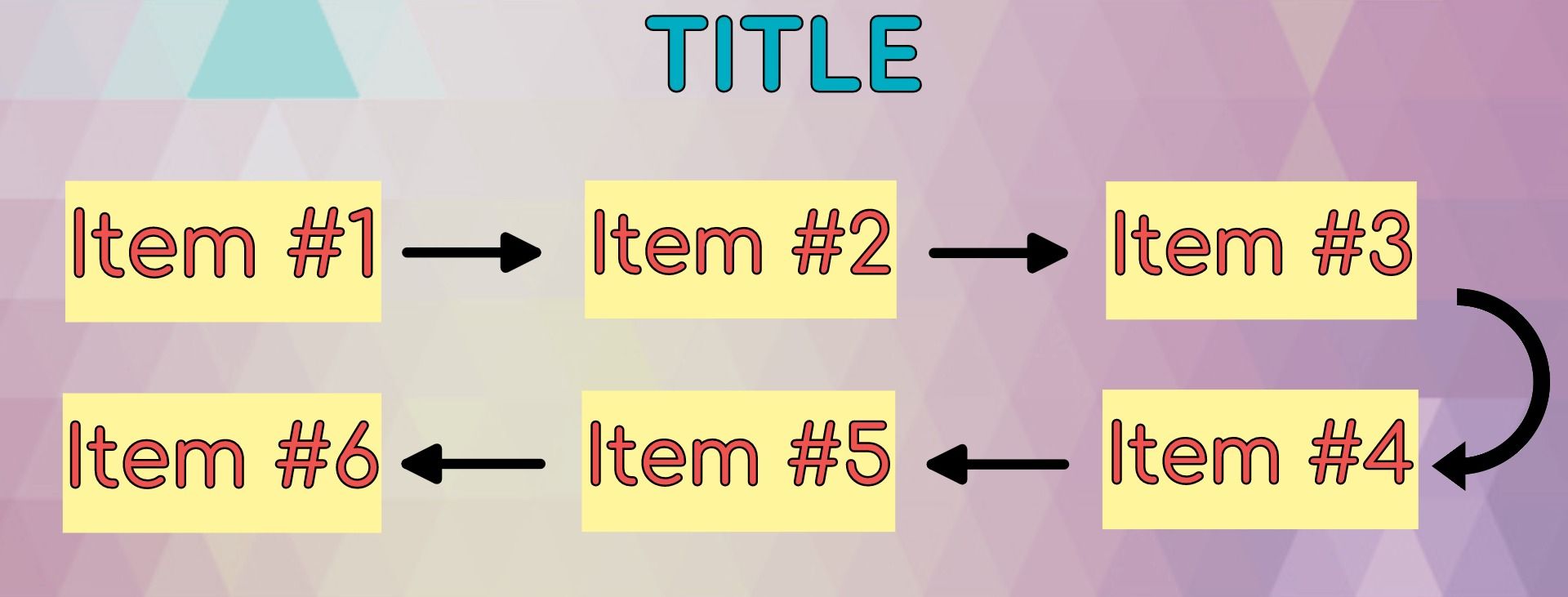
The Flowchart is one of the most versatile and recognizable forms of graphic organizer out there, ideal for project planning and science experiments. A goes to B goes to C goes to D . With this version, you can copy and paste sections of the chart to make it as long or as short as you need, label each section with specific details, and add a title and other information for your assignment.
2. Timeline
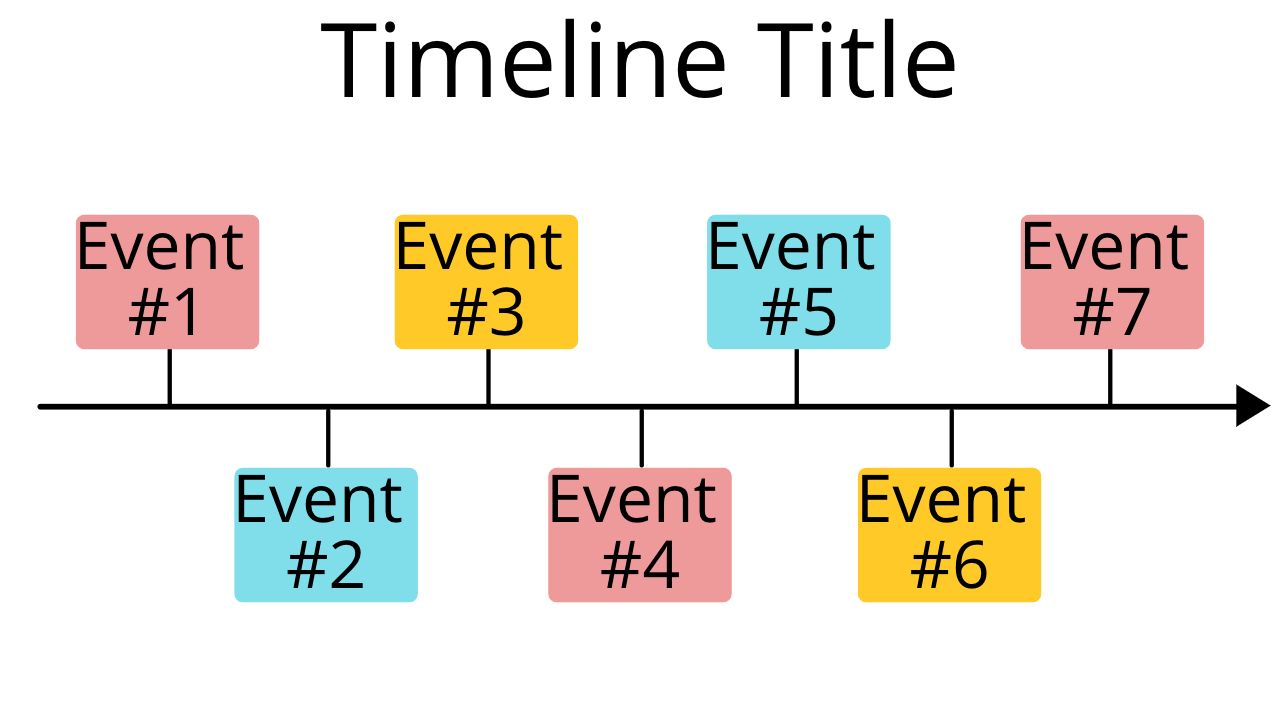
The Timeline is similar to the flowchart , with events spaced out along a single path . In a Timeline, however, the intervals between the events is important to the graphic organizer as a whole. Using this template, you can drag events from one point of the Timeline to another, and add text labels for years and events.
3. Venn Diagram
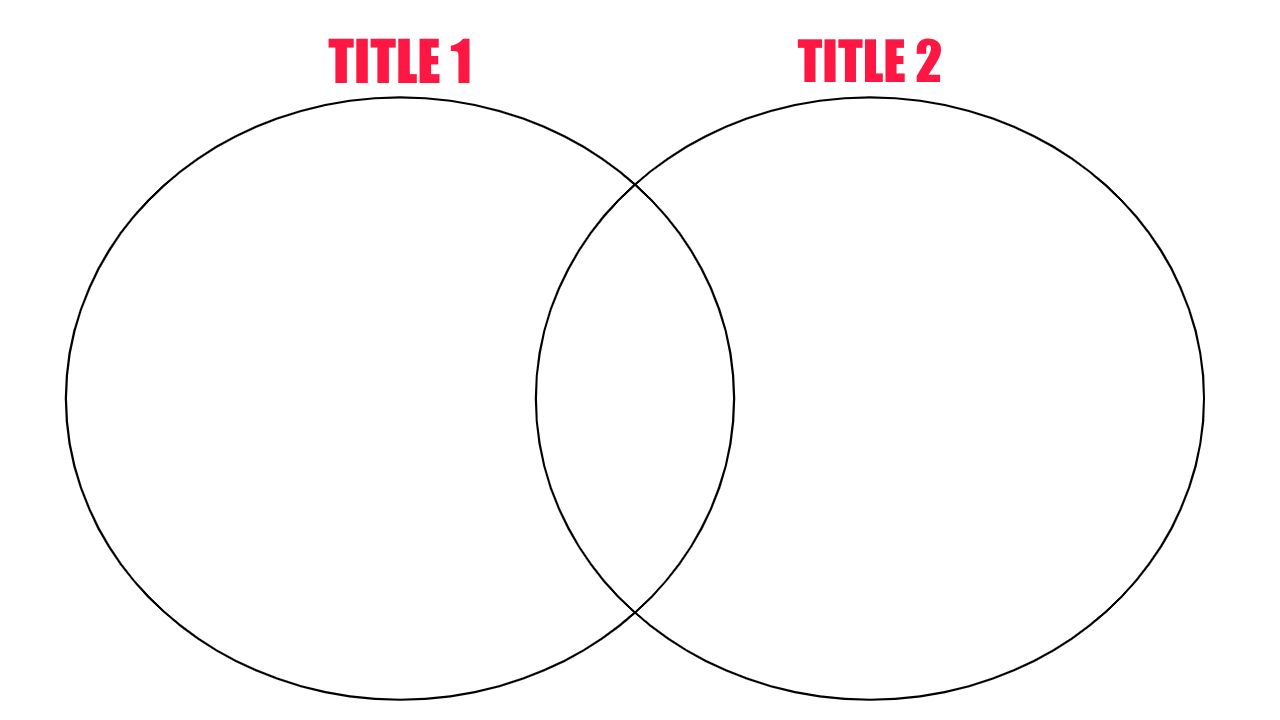
One of the most widely-used graphic organizers, the Venn Diagram provides a simple way for students to compare and contrast 2 or more distinct ideas. With this template, you can copy and recolor the Venn Diagram circles to compare any number of items with each other.
4. Plot Pyramid
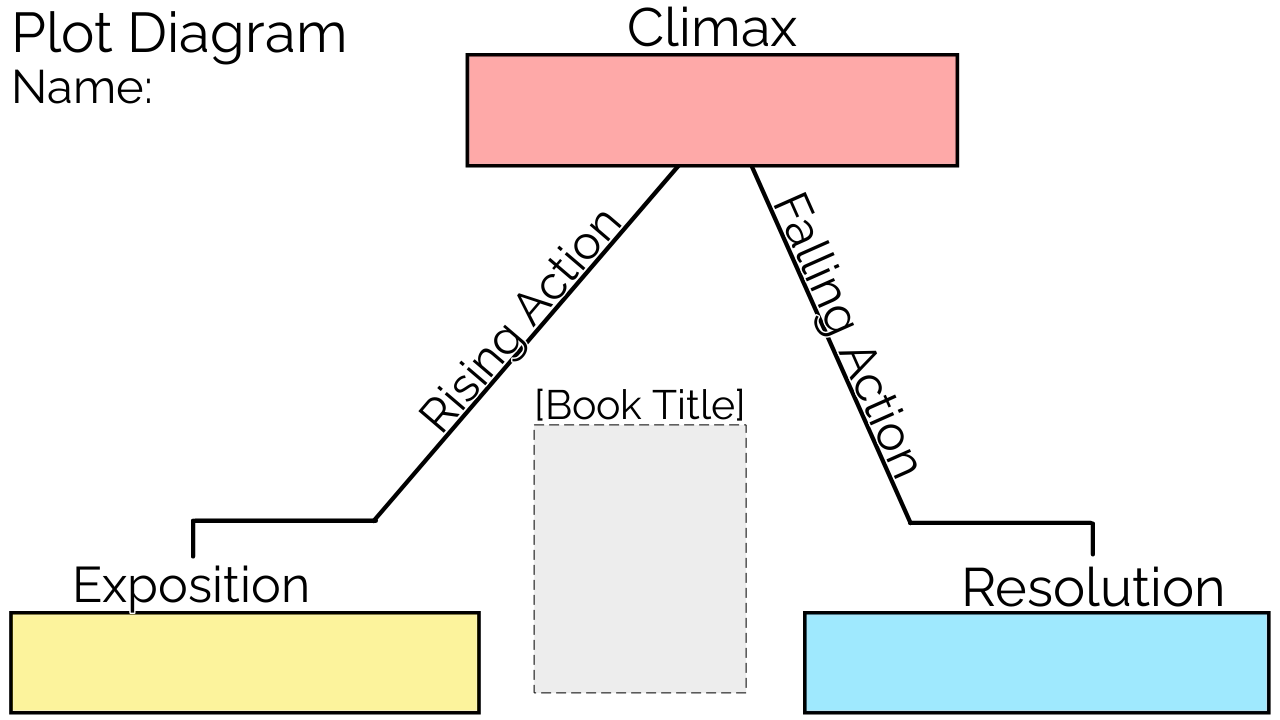
This graphic organizer is most commonly used in elementary and middle school English, language arts, and literature classes. It’s used to identify and map the various stages of a plot arc , from exposition to conclusion. Use this template to title the Plot Pyramid and add any other relevant information you need.
5. Brainstorm Chart
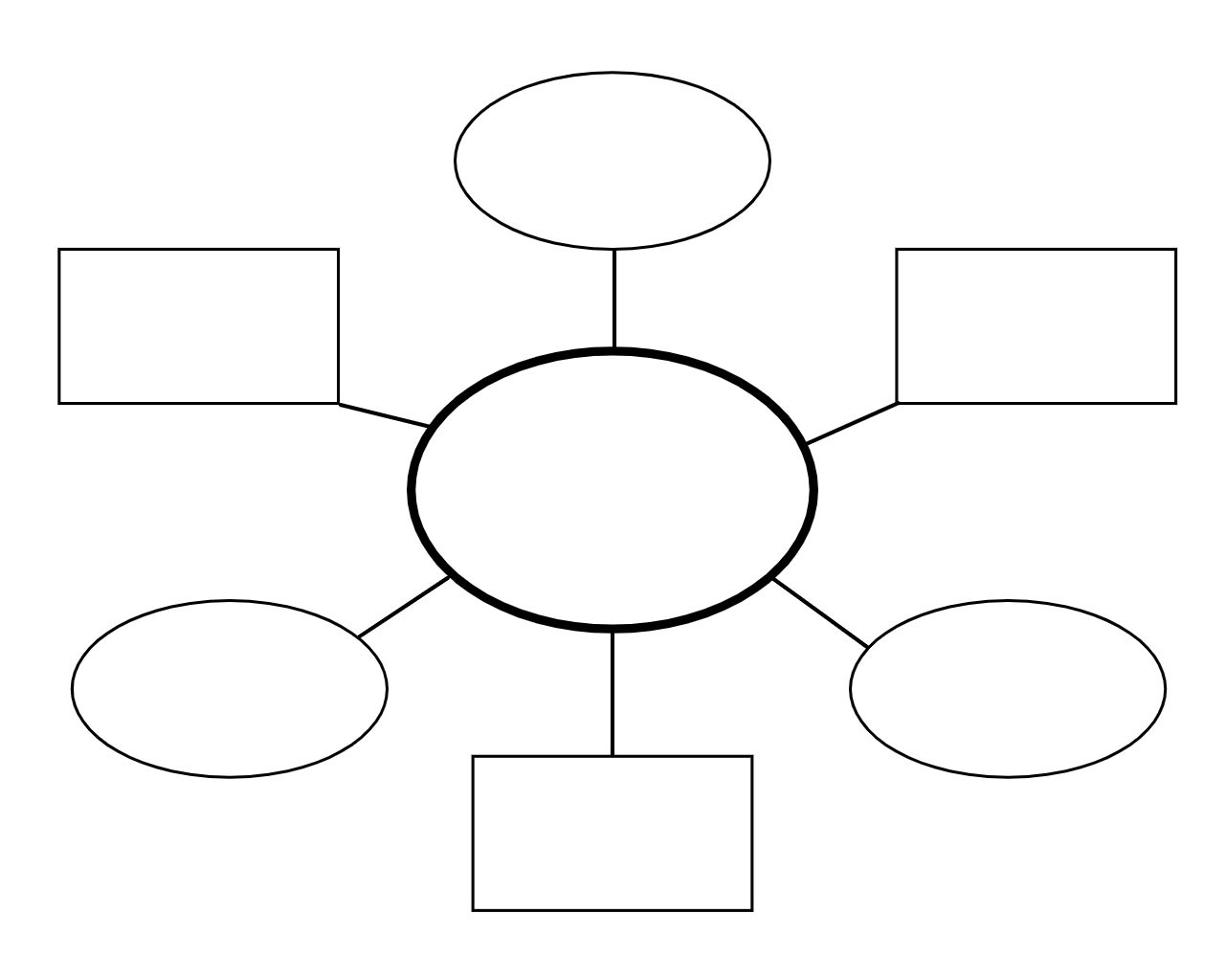
The Brainstorm Chart is a far more freeform type of graphic organizer than most others on this list, and can be arranged almost any way you like. All it requires is a central idea or “problem” to solve, along with an array of other ideas and concepts that are connected to it, and supporting details for these connected points. The freeform nature of the Brainstorm Chart allows students to think creatively and originally on any subject.
6. Concept Map
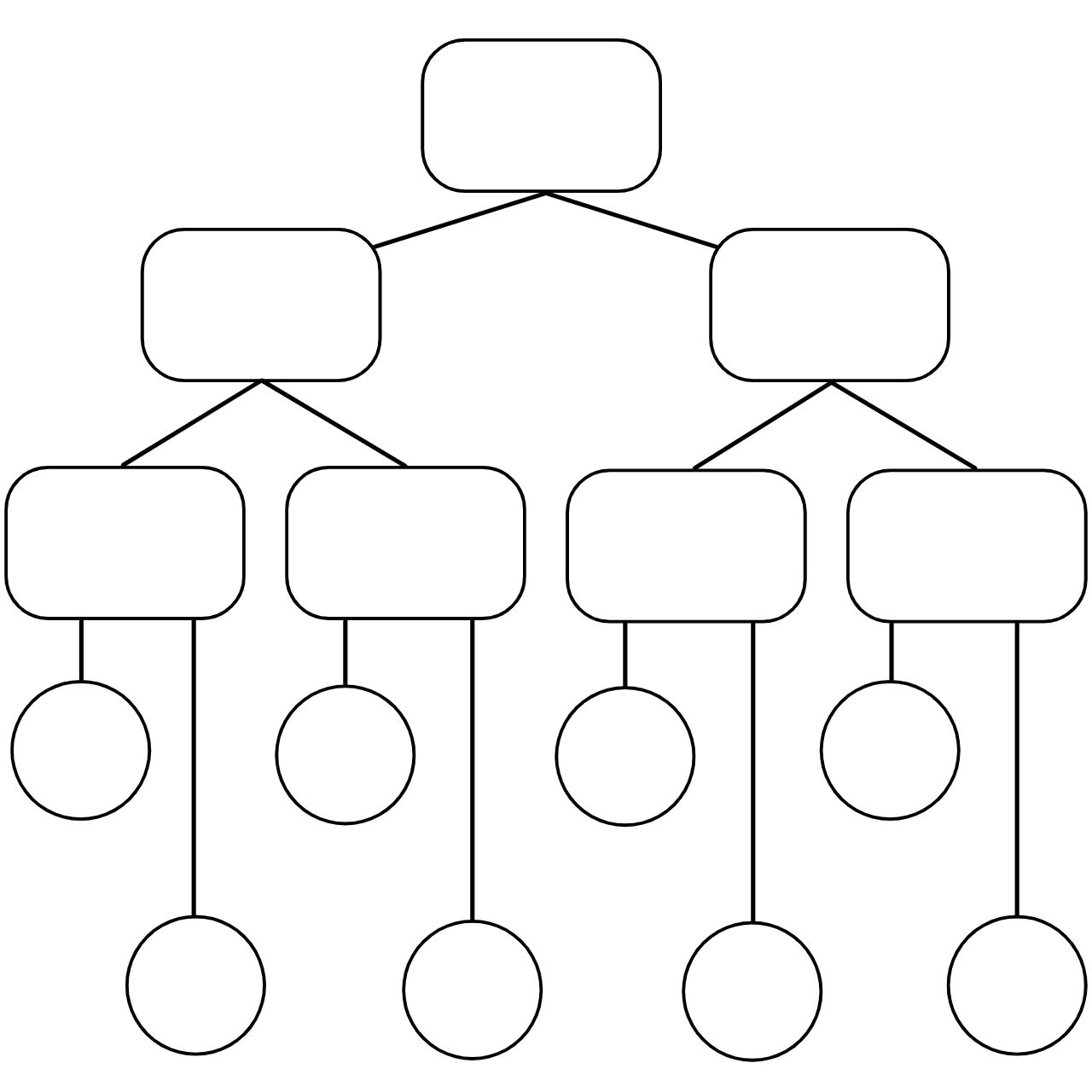
The Concept Map is similar in form to the Brainstorm Chart, but with slightly more limitations on how it’s used. It’s used to illustrate the relationships that exist between various related concepts , filling in different sections of the organizer to show how the different parts are connected. The Concept Map is perfect for introducing students to a new set of related vocabulary terms in any subject.
7. 5-Paragraph Essay Outline
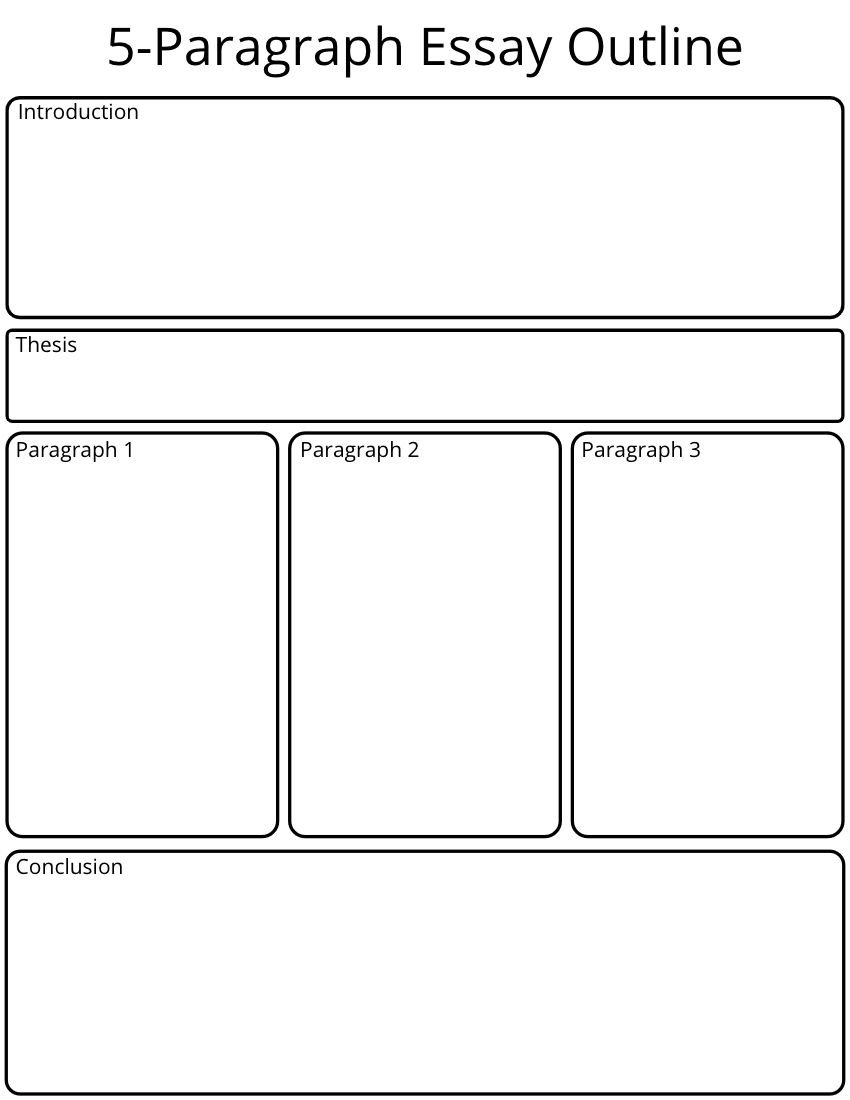
While some of your students may not remember the 5-paragraph essay too fondly years later, it’s an important step in developing their persuasive writing . This classic 5-paragraph planner is perfect for helping students construct their arguments, counter-arguments, supporting data, and conclusions before they put pen to paper.
8. 4 Square Writing Chart
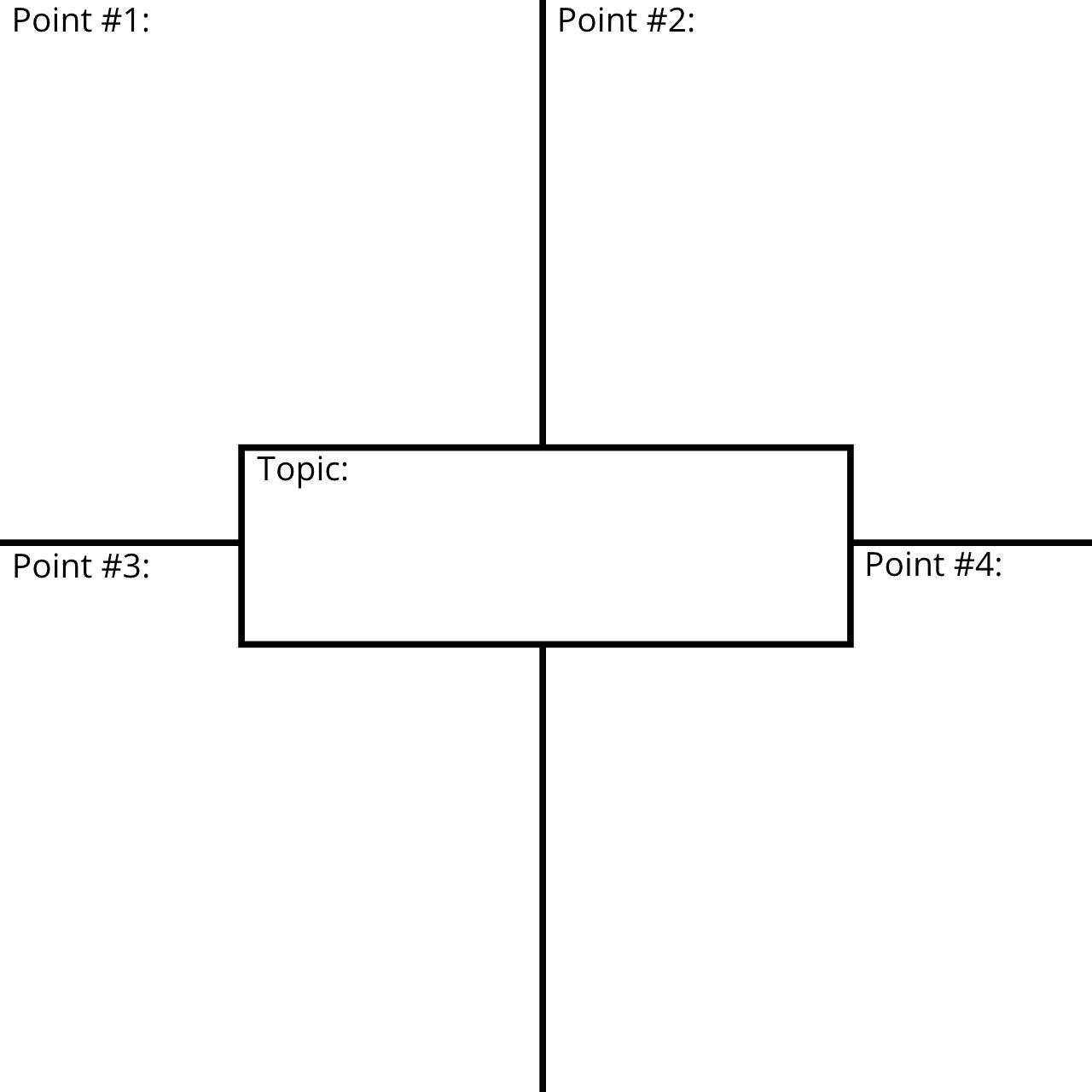
The 4 Square Writing Chart is similar to the 5-paragraph essay outline, it gives space for looser organizational styles and more creative types of writing structure . The central area contains the main idea or argument, and the surrounding squares are filled with supporting arguments, sections of a narrative essay, personal experiences, or several sides to the same story.
9. Story Map
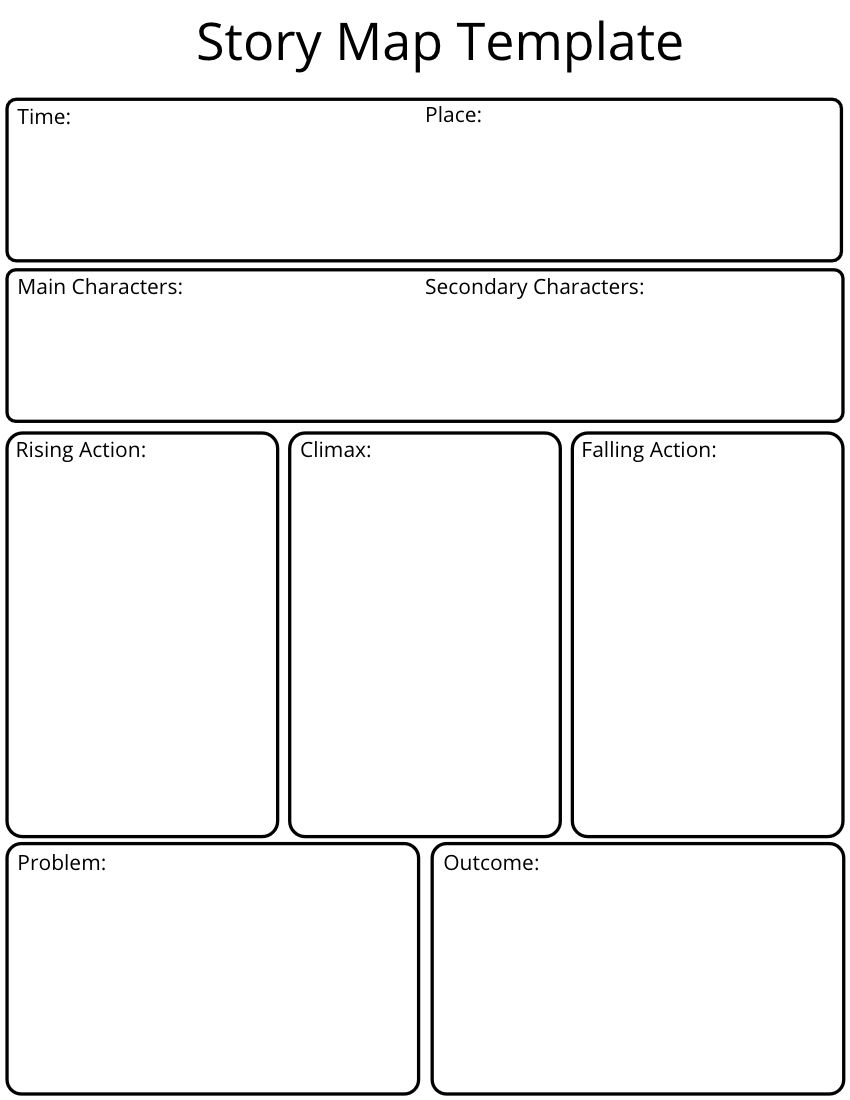
The Story Map is used for a similar purpose to the Plot Pyramid, but with a broader approach to narrative plot arcs. In the Story Map, students not only recount the plot progression of a story, but detail the setting , characters , and central problems and outcomes . There are dozens of ways to organize your own Story Map, so I recommend you use this template to include whatever areas are most important for your students to identify and analyze.
10. KWL Chart
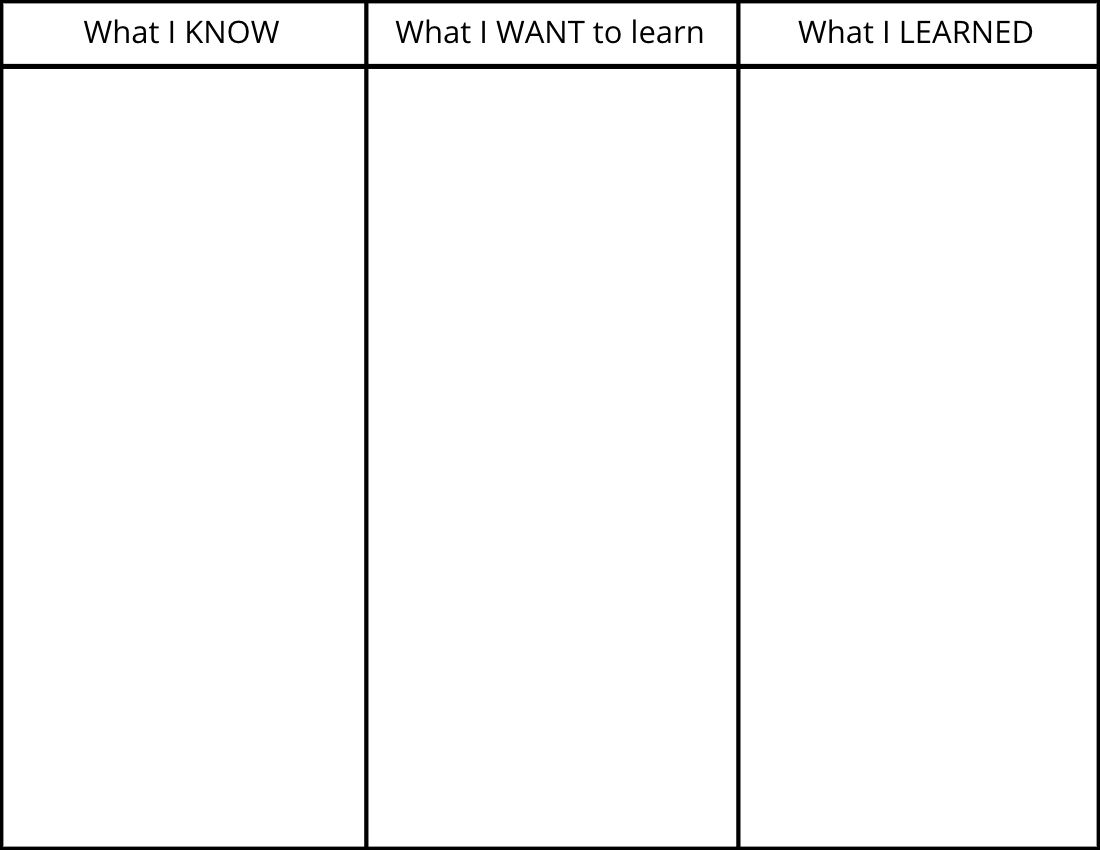
KWL Charts ask students to write on three different things before and after completing a lesson, activity, or reading: what they Know already about the topic, what they Want to learn from the lesson, and, afterward, what they Learned from the experience. It creates more of a big-picture exercise than most of the graphic organizers on this list, allowing students to identify what they gain from their lessons.
I hope these graphic organizer templates help you engage students effectively in every subject you teach. For more tips and tutorials on creating great digital content in 2021, check out the Kapwing YouTube channel or read through some related articles on education materials:
• 10 Back to School Frames for Fall 2021 • The 4 Best Ways to Learn Video Editing Online • How to Add Subtitles to a Lecture Video • How to Make a Frayer Model Online

5 Free Zoom Virtual Backgrounds for Teachers in 2020
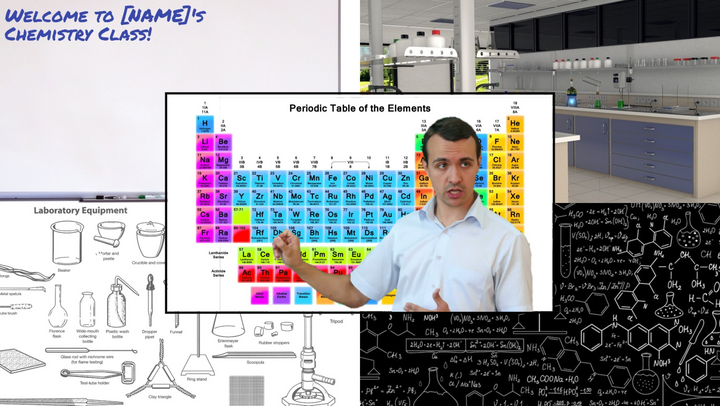
5 Perfect Zoom Virtual Backgrounds for Chemistry Teachers

5 Free Zoom Virtual Backgrounds for Students


IMAGES
VIDEO
COMMENTS
Offer some more specific background information (as needed). 3. Provide the title of the piece and the author's name if the essay is about a specific book/poem/article/passage. C. Thesis Statement 1. State your topic and position. Remember that a thesis = claim + reasons. 2. Outline your main points and ideas.
Revised on July 23, 2023. An essay outline is a way of planning the structure of your essay before you start writing. It involves writing quick summary sentences or phrases for every point you will cover in each paragraph, giving you a picture of how your argument will unfold. You'll sometimes be asked to submit an essay outline as a separate ...
The basic structure of an essay always consists of an introduction, a body, and a conclusion. But for many students, the most difficult part of structuring an essay is deciding how to organize information within the body. This article provides useful templates and tips to help you outline your essay, make decisions about your structure, and ...
4. As you proceed with the body paragraphs, ensure that the main point is stated in the start of the body paragraphs. Ensure you have used examples as illustrations to support the main idea in each paragraph. 5. Introduce the summary paragraph which only restates the central ideas of the body paragraphs. 6.
The four-paragraph essay consists of an introduction, two body paragraphs and a conclusion. 1. The Introduction. Begin this paragraph with a "hook" that will make readers interested in your essay. The University of Maryland University College recommends using: a surprising statement or statistic, quote, personal story.
Making a detailed outline before you begin writing is a good way to make sure your ideas come across in a clear and logical order. ... your last set of sentences about your specific notes should show the order of the sentences within each paragraph. An outline for the essay about the 1999 Republican Primary (showing only the sections worked out ...
The exact format of your citations depends on which citation style you are instructed to use. ... How to write an essay introduction | 4 steps & examples ... 5908. Academic Paragraph Structure | Step-by-Step Guide & Examples Each paragraph in your paper should focus on one central point. Follow these 6 steps for a strong paragraph structure. 1409.
When you write an essay for a course you are taking, you are being asked not only to create a product (the essay) but, more importantly, to go through a process of thinking more deeply about a question or problem related to the course. By writing about a source or collection of sources, you will have the chance to wrestle with some of the
Writing a 4 paragraph paper like a pro will need you to incorporate an introduction, body paragraphs, or a conclusion. An introduction paragraph should always start with a "hook," which will make the reader interested in the essay. You need to use a statistic or startling statement, personal narrative, rhetorical question, or a quote.
Essay Title: Four Paragraph Essay Outline First Paragraph: Introduction (5-8 sentences) Hook or Grabber: Introduce the book, author, and general background of the essay topic: Thesis Statement: Body Paragraph Topic Sentence: Concrete Detail: Commentary (2 sentences): Concrete Detail: Commentary (2 sentences): Concluding Sentence:
4 Paragraph Essay Outline Thesis Introduction ... Body Paragraph 2 . Title: 4 Paragraph Essay Template Author: Freeology.com Subject: Essay Writing Keywords: Thesis, Body Paragraphs, Conclusion Created Date: 9/26/2011 8:51:38 AM ...
Strategies for Essay Writing--Complete. description. Tips for Reading an Assignment Prompt. description. Asking Analytical Questions. description. Thesis. description. Introductions. description. What Do Introductions Across the Disciplines Have in Common? description. Anatomy Of a Body Paragraph. description. Transitions. description. Tips for ...
Step 1: Hook your reader. Step 2: Give background information. Step 3: Present your thesis statement. Step 4: Map your essay's structure. Step 5: Check and revise. More examples of essay introductions. Other interesting articles. Frequently asked questions about the essay introduction.
Four Paragraph Essay Outline. This outline provides a framework for the 4-paragraph essay. Each part of the introduction, body paragraphs, and conclusion is represented. After completing this worksheet, students will be prepared write the rough draft and begin refining the language.
Four Paragraph Essay Template. by. Science With Heart. $3.00. Google Docs™. This four-page essay template encourages students to dive deeper into their topic while keeping them well organized. Each page is dedicated to a single paragraph: the introduction, body paragraphs 1 and 2, and the conclusion.Each part includes an explanation of what ...
Five Paragraph Essay Template LearningAlly.org To the teacher: Use this template as a beginning guide to help students with the writing process. This is an ideal template to be used ... intending to assert, or explain in the essay. 4. Supporting evidence: This is what supports the topic sentence in each body paragraph. Most writing should have a
The structure of your expository essay will vary according to the scope of your assignment and the demands of your topic. It's worthwhile to plan out your structure before you start, using an essay outline. A common structure for a short expository essay consists of five paragraphs: An introduction, three body paragraphs, and a conclusion.
Brainstorming form for the 4 paragraph essay. Use this page to begin shaping the thesis, introduction, body and conclusion of the essay. ... 5 Paragraph Essay Graphic Organizer 3 Paragraph Essay Graphic Organizer Five Paragraph Essay Outline Three Paragraph Essay Outline. Tags: Brainstorming Paragraphs. Next post 3 Paragraph Essay Graphic ...
There is an Outline worksheet on the back of this page to help you start planning the content, order and organization of your essay. Paragraph 1: Introduction -- If possible, open with an attention-getting device to interest the reader (perhaps a quote or question). Introduce the topic of your essay in general, and present some context for this ...
8. 4 Square Writing Chart. The 4 Square Writing Chart is similar to the 5-paragraph essay outline, it gives space for looser organizational styles and more creative types of writing structure. The central area contains the main idea or argument, and the surrounding squares are filled with supporting arguments, sections of a narrative essay ...